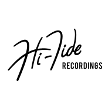Samurai
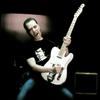
Joined: Mar 14, 2006
Posts: 2283
Kiev, Ukraine




|

Posted on Jan 07 2020 04:53 AM
Hi everybody! Last year we got close to recording our first album and made some demos with pretty little success) The main thing I cannon understand till now is how to record generally.
First demo we’ve recorded one by one (drummer recorded all the tracks first, than bass was recorded using drum tracks, than me recorded all guitars using ready rythms). It was clean and nice sounding, but completely lifeless. No band synergy or drive. Here’s the one:
https://soundcloud.com/waikiki-makaki/breakers-master-mix
Later demos we’ve recorded “all together” using some screens to separate drums and amps. It was much better in terms of drive and energy but the quality was so-so. Here is the latest one and the one I like)
https://soundcloud.com/waikiki-makaki/psycho-beach
Are we doing something wrong? How do you record? Any tips or advice? Thanks!

— Waikiki Makaki surf-rock band from Ukraine
https://linktr.ee/waikikimakaki
Lost Diver
https://lostdiver.bandcamp.com
https://soundcloud.com/vitaly-yakushin
|
psychonaut

Joined: Dec 08, 2007
Posts: 1304


|

Posted on Jan 07 2020 06:31 AM
Samurai wrote:
Hi everybody! Last year we got close to recording our first album and made some demos with pretty little success) The main thing I cannon understand till now is how to record generally.
First demo we’ve recorded one by one (drummer recorded all the tracks first, than bass was recorded using drum tracks, than me recorded all guitars using ready rythms). It was clean and nice sounding, but completely lifeless. No band synergy or drive. Here’s the one:
https://soundcloud.com/waikiki-makaki/breakers-master-mix
Later demos we’ve recorded “all together” using some screens to separate drums and amps. It was much better in terms of drive and energy but the quality was so-so. Here is the latest one and the one I like)
https://soundcloud.com/waikiki-makaki/psycho-beach
Are we doing something wrong? How do you record? Any tips or advice? Thanks!
Recording one instrument at a time usually yields stiff, sterile, bland results. When everyone is playing at the same time magic things can happen, happy accidents that can't happen any other way. Of course it's more challenging all at once. Bleed is an issue naturally, but it's a good thing if you know how to use it. Bleed gives you distance and delay which gives you depth. Microphone choice and placement becomes more crucial and imperative, and you can use the mics polar patterns to control an manipulate the leakage from other instruments. Besides, you're going to mix it all down to 2 track anyway, so too much isolation becomes silly since the goal is to balance everything, and get it all to sit right with each other.
The secret is to get the sound right at the source and "bake it in", that way you don't need to fuck with it later, it will be right from
the start.
Most of the classics were done this way out of necessity of course, but even after multitrack was introduced. Over dubbing is fine, but if you've got at least the rhythm section cooking at once... all that said, there's no right or wrong way as long as you get the desired results, but 'live' recording is always preferable as far as I'm concerned.
In the end it's really an art, and like any other art - it can take time to master it. Experiment, keep at it, and eventualy youll get good results. A good place to start is to study photos of old recording sessions and study how things are mic'd and placed at those sessions. I've gleaned tons of knowledge from doing this. Hope this helps..

— https://www.facebook.com/coffindagger
http://coffindaggers.com/
http://thecoffindaggers.bandcamp.com
Last edited: Jan 07, 2020 06:51:45
|
stratdancer

Joined: Dec 11, 2013
Posts: 2537
Akron, Ohio



|

Posted on Jan 07 2020 07:10 AM
We are dealing with this subject at this very time.
Fully prepped and fully practiced and recorded live with a few overdubs and flub fixing is a great goal but pretty difficult for musicians that work 40 plus hours a week in their careers and working through a complicated score.
I feel that in the real world, with so many outside distractions for us semi professional musicians, that having a rhythm guitar track ready to lay out the entire song, practiced fully with the drummer, to be the place to start. Isolate as much of the guitar sound, fully tuned and played spotlessly in case of bleed, from the drum mics as possible but room volume and energy may be key for your drummer to help energize him or her. The focus is to get a great and powerful drum track recorded as the base for the rest of the song development.
Ideally when the track is cut, both need to feel like they are playing with all their heart and sole. As I say, if this can be done live with a full band playing spotlessly its all the better but if the drummer can get all the feel from one rhythm track then you can lay down the foundation of a great drum track. Once this is done, use the rhythm track as a reference track (if needed)to track all the rest of the instruments. I'd start with the final rhythm tracks then lay down bass then work through all the leads and dubbing fills.
Once again, it's all about the complexity of the score and how much rehearsal and prep is done before hand. Going live is a great goal but at the same time you want every instrument to sound its best and that might mean dubbing those tracks in later with careful mic placement and tracking performance. As far as leads go, having the basic foundation tracks recorded and the ability to explore different leads and directions is really what studio magic can do for a song to be a masterpiece.
I apologize for the longwinded thoughts.
— The Kahuna Kings
https://www.facebook.com/pages/The-Kahuna-Kings/459752090818447
https://thekahunakings.bandcamp.com/releases
Last edited: Jan 07, 2020 07:21:31
|
Samurai

Joined: Mar 14, 2006
Posts: 2283
Kiev, Ukraine




|

Posted on Jan 07 2020 07:19 AM
psychonaut wrote:
Samurai wrote:
Hi everybody! Last year we got close to recording our first album and made some demos with pretty little success) The main thing I cannon understand till now is how to record generally.
First demo we’ve recorded one by one (drummer recorded all the tracks first, than bass was recorded using drum tracks, than me recorded all guitars using ready rythms). It was clean and nice sounding, but completely lifeless. No band synergy or drive. Here’s the one:
https://soundcloud.com/waikiki-makaki/breakers-master-mix
Later demos we’ve recorded “all together” using some screens to separate drums and amps. It was much better in terms of drive and energy but the quality was so-so. Here is the latest one and the one I like)
https://soundcloud.com/waikiki-makaki/psycho-beach
Are we doing something wrong? How do you record? Any tips or advice? Thanks!
Recording one instrument at a time usually yields stiff, sterile, bland results. When everyone is playing at the same time magic things can happen, happy accidents that can't happen any other way. Of course it's more challenging all at once. Bleed is an issue naturally, but it's a good thing if you know how to use it. Bleed gives you distance and delay which gives you depth. Microphone choice and placement becomes more crucial and imperative, and you can use the mics polar patterns to control an manipulate the leakage from other instruments. Besides, you're going to mix it all down to 2 track anyway, so too much isolation becomes silly since the goal is to balance everything, and get it all to sit right with each other.
The secret is to get the sound right at the source and "bake it in", that way you don't need to fuck with it later, it will be right from
the start.
Most of the classics were done this way out of necessity of course, but even after multitrack was introduced. Over dubbing is fine, but if you've got at least the rhythm section cooking at once... all that said, there's no right or wrong way as long as you get the desired results, but 'live' recording is always preferable as far as I'm concerned.
In the end it's really an art, and like any other art - it can take time to master it. Experiment, keep at it, and eventualy youll get good results. A good place to start is to study photos of old recording sessions and study how things are mic'd and placed at those sessions. I've gleaned tons of knowledge from doing this. Hope this helps..

thanks! A lot of useful thoughs
— Waikiki Makaki surf-rock band from Ukraine
https://linktr.ee/waikikimakaki
Lost Diver
https://lostdiver.bandcamp.com
https://soundcloud.com/vitaly-yakushin
|
Samurai

Joined: Mar 14, 2006
Posts: 2283
Kiev, Ukraine




|

Posted on Jan 07 2020 07:21 AM
stratdancer wrote:
Fully prepped and fully practiced and recorded live with a few overdubs and flub fixing is a great goal but pretty difficult for musicians that work 40 plus hours a week in their careers and working through a complicated score.
I feel that in the real world, with so many outside distractions for us semi professional musicians, that having a rhythm guitar track ready to lay out the entire song, practiced fully with the drummer, to be the place to start. Isolate as much of the guitar from the drum mics as possible but room volume and energy may be key for your drummer to help energize him or her. The focus is to get a great drum track recorded as the base for the rest of the song development.
Ideally when the track is cut both need to feel like they are playing with all their heart and sole. As I say, if this can be done live with a full band playing spotlessly its all the better but if the drummer can get all the feel from one rhythm track then you can lay down the foundation of a great drum track. Once this is done, use the rhythm track as a ghost track (if needed)to track all the rest of the instruments. I'd start with the final rhythm tracks then lay down bass then work through all the leads and dubbing fills.
Once again, it's all about the complexity of the score and how much rehearsal and prep is done before hand. Going live is a great goal but at the same time you want every instrument to sound its best and that might mean dubbing those tracks in later with careful mic placement and tracking performance. As far as leads go, having the basic foundation tracks recorded and the ability to explore different leads and directions is really what studio magic can do for a song to be a masterpiece.
I apologize for the longwinded thoughts.
David, you may judge by the second track I posted how well we were prepared. It’s a fifth take live I think. It is good as for me. We are a trio so no rhythm guitar, I want to sound it the same as on scene, maybe I am wrong.
— Waikiki Makaki surf-rock band from Ukraine
https://linktr.ee/waikikimakaki
Lost Diver
https://lostdiver.bandcamp.com
https://soundcloud.com/vitaly-yakushin
|
stratdancer

Joined: Dec 11, 2013
Posts: 2537
Akron, Ohio



|

Posted on Jan 07 2020 07:45 AM
As far as that track is concerned and looking at the picture, it looks like you are recording with one mic on the set. Is that true and what mic is it? Any critic I would offer is that the drum track lacks the punch sound wise and its not the actual tracking performance by the drummer. In the recording, the snare is way out front and lacks snap and pop. You could use more shimmer from the cymbals. If you have more individual tracks available, add a 57 set at a 45 degree angle about a half an inch from the edge of the snare you will get the snap. Ideally you could use two condenser mics toed out and panned far left and right
as overheads and a kick drum mic all on individual tracks for level set and eq. Generally the overheads will need little eq when finished but the snare and kick usually can be tweaked to liking. Adding a little reverb to the snare in the mix is fairly critical to give it more room depth but not to the overheads or kick.
Performance wise the track is fine!
— The Kahuna Kings
https://www.facebook.com/pages/The-Kahuna-Kings/459752090818447
https://thekahunakings.bandcamp.com/releases
Last edited: Jan 07, 2020 08:04:38
|
Taifighter
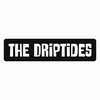
Joined: Oct 31, 2018
Posts: 225
Indiana


|

Posted on Jan 07 2020 08:41 AM
stratdancer wrote:
If you have more individual tracks available, add a 57 set at a 45 degree angle about a half an inch from the edge of the snare you will get the snap.
I like a mic under the snare, blended to taste of course, to get a nice touch of high end.
|
Vince_Ray
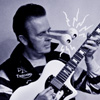
Joined: Aug 26, 2015
Posts: 252
|

Posted on Jan 07 2020 10:27 AM
I gotta say...a lot of late 50s and early 60s records that we're fans of are way less than perfect. Yet we live them and don't criticise their faults. Obviously we should aim for getting everything as good as poss, but so many of the hits from that era have imbalanced instruments and missing elements. Just sayin, don't be to hard in yourself or each other. Have fun, experiment and go for a killer live take
|
Surfing_Sam_61

Joined: Jan 15, 2019
Posts: 1515
|

Posted on Jan 07 2020 06:27 PM
Could be the other tracks are playing ahead of the beat of the drum track that will make the song sound slower by the ear or lack energy. If you go the other way around the drums will drive the song even though all the tempos are the same. I found playing to a drum track very a hard with out click track or at least a cymbal crash to start in the right place etc. Usually the drummer follows the other musicians in most cases. That's why its so hard to play with a drum machine too. It takes a while to get a sixth sense musically playing with drum tracks. Play slightly micro note wise behind the drum beat and the song will have more energy at the same tempos. Usually Surf drummers played ahead of the beat because Big Band drummers did it that way, most learned from and used that style.
You can improve each track by recording better takes later - even the drums, just play a basic drum pattern to start and then re-record another drum track with fill and vamps etc after guitar and bass tracks are laid down. Its hard to groove as a drummer without music to play with, its hard to find drum patterns that fit the bass guitar and rhythm guitar that will fit the song note wise. The bass drum and snare usually follow the bass lines anyway. The bass drum usually follow bass line root notes and the snare generally follows the bass line 5th as a guide to find the groove of the song with the right drum patterns or combinations there of.
Usually most old recording were laid down live as a backing track before 1968 when the 8 track tape machines came out. That's why they had so many musicians at sessions before that time. Another trick to thicken the sound was to have a baritone guitar player playing notes between the bass and guitar tracks etc. But you can make nice recordings multitracking each instrument in different session and at different times, but it takes while to get use to it. Basically your trying to make a new song, so its hard to play tight right away its just a sketch of a painting at this point. Its a rough draft of a novel so to speak.
Don't forget many old school studio sessions took as many as 30 takes at times to get a good backing track, so multi-tracking could take 120 takes for each song with just 4 tracks. Its a numbers game.
Last edited: Jan 07, 2020 19:23:33
|
PolloGuitar

Joined: Feb 26, 2006
Posts: 5098
San Francisco











|

Posted on Jan 07 2020 07:20 PM
Heya Samurai-
I have recorded many albums in a basement situation (The first two Pool Boy albums, The TomorrowMen, Meshugga Beach Party, The Pyronauts, The Deadbeats) and the room in your picture doesn't look all that different in size from my space. And it has one advantage- a nice high ceiling.
These notes are entirely based on the one photo you posted above 
First, I'm going to suggest you tune the space a little. You want a mix of bright areas and dead areas, but you don't want sound to bounce around or echo within the room. So try hanging carpets or sound blankets a little off the wall, this will reduce brightness and also create bass traps. Try to keep the floor under the drums without carpet- preferably wood, but the spaces under the amps with carpet. Make sure there isn't sound refection off the ceiling- it should have a varied surface- not flat. The ceiling is the hardest thing to tune, but the biggest source of refection.
Get rid of the blanket over the bass drum, that will suck the life out of everything. Also, I don't think you need the wood around the amps, they probably aren't doing much any way.
You didn't say how many mics you have, but if you are recording a trio, I think at least five- Kick, snare, one overhead on the drums, guitar and bass. If you can have two for stereo overheads, that would help. If you can record a direct out of the bass, that would be good, too.
When you set up, don't put the drums in a corner- too many reflections. Try to have them centered in the room, the drummers back about a foot away from a wall. Put the bass amp as far away from the drums as possible, but squarely in front of and facing the kick drum. Put the guitar amp at about a 45 degree angle to the side of the bass, facing the drummer.
To set the volume of the amps- have the drummer play full throttle and turn the amps up enough so that he can hear them just enough to know his place in the song. It won't be comfortable for the drummer, but this prevents too much amp bleed into the drum mics (if he can barely hear you, the mics can't either.) It's important that the drummer play full volume- nothing makes for a tepid sounding recording like quiet drums. Drums sound better and best when they are hit hard.
Rehearse a lot before you record. When you do this kind of live recording (with room bleed) it's really hard to punch in (because the punches won't have background noise.) If you are planning on recording a second guitar, do the recording in the same room, but use another mic far away from the amp to capture the room ambience, this will make your OD guitar sit in with the basic tracks.
— Buy Speed of Dark @ Bandcamp
Buy Spin the Bottle @ Bandcamp
My Blog- Euro Tour Blog
Pool Boys on Spotify
INSTAGRAM
Frankie & The Pool Boys on FB
Pollo Del Mar on FB
DJ Frankie Pool Boy on North Sea Surf Radio
|
synchro

Joined: Feb 02, 2008
Posts: 4542
Not One-Sawn, but Two-Sawn . . . AZ.





|

Posted on Jan 07 2020 09:33 PM
FWIW, I have a unique technique that has yielded some good results at a budget rate. Let me start by saying that I want two things which are, by their very nature, all but completely incompatible; the energy of a live take with everyone playing and separation of all instruments onto their own track. So here’s how I did it.
I used a DAW and recorded the drums acoustically onto two channels while the bass and the guitar were each recorded directly onto the DAW. Everyone had headphones, which is how the drummer could hear the guitar and bass and how we could hear ourselves. We preserved the energy of a live take but you couldn’t hear the drums on the guitar tracks and vice versa.
If you want to record directly to the DAW, but still have the sound of your amp, a re-amper can be used. This is a DI box that allows you to playback the track and send it to your amp at the right impedance, then you re-record that track mic’d and you end up with the pristine track and the re-amped track, which has the character of your amp and any effects you care to use. This also allows you to have several chances to get the amp and effects settings to your liking, because your pristine track can be preserved and reused as many times as you need to.
On some of the tracks I did this way, there were vocals, and I was able to perform those after the instruments had been laid down by using a vocal mic’ and a headset. For my purposes, vocals have to be done this way, unless the entire track is to be recorded ambiently. Besides that, it gives a cleaner vocal track when I don’t have to think about the guitar part.
I’ve heard good things about the Little Labs Redeye re-amper.
— The artist formerly known as: Synchro
When Surf Guitar is outlawed only outlaws will play Surf Guitar.
|
Samurai

Joined: Mar 14, 2006
Posts: 2283
Kiev, Ukraine




|

Posted on Jan 08 2020 01:13 AM
stratdancer wrote:
As far as that track is concerned and looking at the picture, it looks like you are recording with one mic on the set. Is that true and what mic is it? Any critic I would offer is that the drum track lacks the punch sound wise and its not the actual tracking performance by the drummer. In the recording, the snare is way out front and lacks snap and pop. You could use more shimmer from the cymbals. If you have more individual tracks available, add a 57 set at a 45 degree angle about a half an inch from the edge of the snare you will get the snap. Ideally you could use two condenser mics toed out and panned far left and right
as overheads and a kick drum mic all on individual tracks for level set and eq. Generally the overheads will need little eq when finished but the snare and kick usually can be tweaked to liking. Adding a little reverb to the snare in the mix is fairly critical to give it more room depth but not to the overheads or kick.
Performance wise the track is fine!
There were 4 mics for the drum and mics for bass and guitar, so 6 mics
But yep, it sounds similar to our rehearsals when we just record them with Zoom H1(
— Waikiki Makaki surf-rock band from Ukraine
https://linktr.ee/waikikimakaki
Lost Diver
https://lostdiver.bandcamp.com
https://soundcloud.com/vitaly-yakushin
|
Samurai

Joined: Mar 14, 2006
Posts: 2283
Kiev, Ukraine




|

Posted on Jan 08 2020 01:20 AM
PolloGuitar wrote:
Heya Samurai-
I have recorded many albums in a basement situation (The first two Pool Boy albums, The TomorrowMen, Meshugga Beach Party, The Pyronauts, The Deadbeats) and the room in your picture doesn't look all that different in size from my space. And it has one advantage- a nice high ceiling.
These notes are entirely based on the one photo you posted above 
First, I'm going to suggest you tune the space a little. You want a mix of bright areas and dead areas, but you don't want sound to bounce around or echo within the room. So try hanging carpets or sound blankets a little off the wall, this will reduce brightness and also create bass traps. Try to keep the floor under the drums without carpet- preferably wood, but the spaces under the amps with carpet. Make sure there isn't sound refection off the ceiling- it should have a varied surface- not flat. The ceiling is the hardest thing to tune, but the biggest source of refection.
Get rid of the blanket over the bass drum, that will suck the life out of everything. Also, I don't think you need the wood around the amps, they probably aren't doing much any way.
You didn't say how many mics you have, but if you are recording a trio, I think at least five- Kick, snare, one overhead on the drums, guitar and bass. If you can have two for stereo overheads, that would help. If you can record a direct out of the bass, that would be good, too.
When you set up, don't put the drums in a corner- too many reflections. Try to have them centered in the room, the drummers back about a foot away from a wall. Put the bass amp as far away from the drums as possible, but squarely in front of and facing the kick drum. Put the guitar amp at about a 45 degree angle to the side of the bass, facing the drummer.
To set the volume of the amps- have the drummer play full throttle and turn the amps up enough so that he can hear them just enough to know his place in the song. It won't be comfortable for the drummer, but this prevents too much amp bleed into the drum mics (if he can barely hear you, the mics can't either.) It's important that the drummer play full volume- nothing makes for a tepid sounding recording like quiet drums. Drums sound better and best when they are hit hard.
Rehearse a lot before you record. When you do this kind of live recording (with room bleed) it's really hard to punch in (because the punches won't have background noise.) If you are planning on recording a second guitar, do the recording in the same room, but use another mic far away from the amp to capture the room ambience, this will make your OD guitar sit in with the basic tracks.
Ferenc, you are always helpful, thanks!
— Waikiki Makaki surf-rock band from Ukraine
https://linktr.ee/waikikimakaki
Lost Diver
https://lostdiver.bandcamp.com
https://soundcloud.com/vitaly-yakushin
|
Samurai

Joined: Mar 14, 2006
Posts: 2283
Kiev, Ukraine




|

Posted on Jan 08 2020 01:22 AM
synchro wrote:
FWIW, I have a unique technique that has yielded some good results at a budget rate. Let me start by saying that I want two things which are, by their very nature, all but completely incompatible; the energy of a live take with everyone playing and separation of all instruments onto their own track. So here’s how I did it.
I used a DAW and recorded the drums acoustically onto two channels while the bass and the guitar were each recorded directly onto the DAW. Everyone had headphones, which is how the drummer could hear the guitar and bass and how we could hear ourselves. We preserved the energy of a live take but you couldn’t hear the drums on the guitar tracks and vice versa.
If you want to record directly to the DAW, but still have the sound of your amp, a re-amper can be used. This is a DI box that allows you to playback the track and send it to your amp at the right impedance, then you re-record that track mic’d and you end up with the pristine track and the re-amped track, which has the character of your amp and any effects you care to use. This also allows you to have several chances to get the amp and effects settings to your liking, because your pristine track can be preserved and reused as many times as you need to.
On some of the tracks I did this way, there were vocals, and I was able to perform those after the instruments had been laid down by using a vocal mic’ and a headset. For my purposes, vocals have to be done this way, unless the entire track is to be recorded ambiently. Besides that, it gives a cleaner vocal track when I don’t have to think about the guitar part.
I’ve heard good things about the Little Labs Redeye re-amper.
Guess it may work! We will definitely try it, however I’ve got the problem playing without hearing the REAL amp sound, it makes my tone worse cause I do not feel the vibe and loose some expression
— Waikiki Makaki surf-rock band from Ukraine
https://linktr.ee/waikikimakaki
Lost Diver
https://lostdiver.bandcamp.com
https://soundcloud.com/vitaly-yakushin
Last edited: Jan 08, 2020 01:34:27
|
synchro

Joined: Feb 02, 2008
Posts: 4542
Not One-Sawn, but Two-Sawn . . . AZ.





|

Posted on Jan 08 2020 06:02 AM
Samurai wrote:
synchro wrote:
FWIW, I have a unique technique that has yielded some good results at a budget rate. Let me start by saying that I want two things which are, by their very nature, all but completely incompatible; the energy of a live take with everyone playing and separation of all instruments onto their own track. So here’s how I did it.
I used a DAW and recorded the drums acoustically onto two channels while the bass and the guitar were each recorded directly onto the DAW. Everyone had headphones, which is how the drummer could hear the guitar and bass and how we could hear ourselves. We preserved the energy of a live take but you couldn’t hear the drums on the guitar tracks and vice versa.
If you want to record directly to the DAW, but still have the sound of your amp, a re-amper can be used. This is a DI box that allows you to playback the track and send it to your amp at the right impedance, then you re-record that track mic’d and you end up with the pristine track and the re-amped track, which has the character of your amp and any effects you care to use. This also allows you to have several chances to get the amp and effects settings to your liking, because your pristine track can be preserved and reused as many times as you need to.
On some of the tracks I did this way, there were vocals, and I was able to perform those after the instruments had been laid down by using a vocal mic’ and a headset. For my purposes, vocals have to be done this way, unless the entire track is to be recorded ambiently. Besides that, it gives a cleaner vocal track when I don’t have to think about the guitar part.
I’ve heard good things about the Little Labs Redeye re-amper.
Guess it may work! We will definitely try it, however I’ve got the problem playing without hearing the REAL amp sound, it makes my tone worse cause I do not feel the vibe and loose some expression
That’s probably the weakest link in the chain, when you use this technique.
— The artist formerly known as: Synchro
When Surf Guitar is outlawed only outlaws will play Surf Guitar.
|
Samurai

Joined: Mar 14, 2006
Posts: 2283
Kiev, Ukraine




|

Posted on Jan 09 2020 01:59 AM
So no recipe, just experiments( I hate recording as much as I like performing live((
— Waikiki Makaki surf-rock band from Ukraine
https://linktr.ee/waikikimakaki
Lost Diver
https://lostdiver.bandcamp.com
https://soundcloud.com/vitaly-yakushin
|
simoncoil
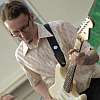
Joined: Sep 28, 2012
Posts: 925
Berlin, Germany





|

Posted on Jan 09 2020 06:32 AM
Samurai wrote:
I hate recording as much as I like performing live((
I have similar feelings, but fortunately our drummer knows some stuff about recording, so I don't have to worry about much else than to play well.
Just as an idea: Have you considered recording a concert (or a series of concerts)? It takes some planning and is not even possible sometimes, but depending on the soundboard at the club you could record all tracks or at least a stereo output, if you bring a laptop and an audio interface. There will of course be some takes, that are not as good, but you can always try to get them better at the next gig.
— Los Apollos - cinematic surf music trio (Berlin)
"Postcards from the Scrapyard" Vol. 1, 2 & 3 NOW available on various platforms!
"Chaos at the Lobster Lounge" available as LP and download on Surf Cookie Records!
|
Samurai

Joined: Mar 14, 2006
Posts: 2283
Kiev, Ukraine




|

Posted on Jan 09 2020 07:39 AM
simoncoil wrote:
Samurai wrote:
I hate recording as much as I like performing live((
I have similar feelings, but fortunately our drummer knows some stuff about recording, so I don't have to worry about much else than to play well.
Just as an idea: Have you considered recording a concert (or a series of concerts)? It takes some planning and is not even possible sometimes, but depending on the soundboard at the club you could record all tracks or at least a stereo output, if you bring a laptop and an audio interface. There will of course be some takes, that are not as good, but you can always try to get them better at the next gig.
Yep, we record almost every concert and some audio and video tracks are pretty good - a lot of them are on Youtube, but we decided we need a studio records and got into process
Unfortunately none of the band members is competent in recording(
— Waikiki Makaki surf-rock band from Ukraine
https://linktr.ee/waikikimakaki
Lost Diver
https://lostdiver.bandcamp.com
https://soundcloud.com/vitaly-yakushin
|
stratdancer

Joined: Dec 11, 2013
Posts: 2537
Akron, Ohio



|

Posted on Jan 09 2020 08:55 AM
When I started home studio recording, the internet didn't exist. I subscribed to magazines that specialized in home studio recording for my basic education. Although so many platforms have evolved since then the basic premise still remains. When tracking drums you can put 57's on your snare, toms and maybe a 58 or equivalent on floor toms. A decent kick drum mic set about an inch from the platter inside the shell or one outside the sound hole or both. A couple of overhead condenser mics panned left and right for cymbals. You can eliminate the individual tom mics if needed. For me, getting a good tight signal and recording of the snare and kick are always the most important. Good condenser mics typically take care of themselves. The thing I fight the most is drum tuning and snap, snare snap and tone and kick drum punch and tone. Much of this battle is eq and compression settings post tracking. The more open the room is the better! This is where the life and energy of the song track lives when a good performance is recorded. Shimmer, punch and energy. This is the foundation.
Guitar recording starts with a great guitar tone but then it can be a challenge to get the right mic and mic locations to capture that sound. Once again the room can effect this. For me, there is always a battle between what my amp sounds like and what it sounds like when recorded. I'm about to do battle once again and will use a 57, a ribbon mic and possible a room condenser. I may even isolate the cabinet in a room that provides a bit more natural dynamics.
Bass tracking can be rather simple when plugged straight to the board via some kind of compressor and/or DI box. Eventually getting the bass mixed properly to sit in the mix and react well with the kick drum can offer challenges.
These are just a few of my basic thoughts after doing this for years. I'm no expert and this is just a hobby for me but I think the principles are pretty universal.
— The Kahuna Kings
https://www.facebook.com/pages/The-Kahuna-Kings/459752090818447
https://thekahunakings.bandcamp.com/releases
Last edited: Jan 09, 2020 08:58:30
|
DeathTide

Joined: Apr 13, 2018
Posts: 1378
New Orleans






|

Posted on Jan 09 2020 01:13 PM
Samurai wrote:
Hi everybody! Last year we got close to recording our first album and made some demos with pretty little success) The main thing I cannon understand till now is how to record generally.
First demo we’ve recorded one by one (drummer recorded all the tracks first, than bass was recorded using drum tracks, than me recorded all guitars using ready rythms). It was clean and nice sounding, but completely lifeless. No band synergy or drive.
I do happen to be a recording professional, but not music (Film & TV). I have been recording music at home since I was six (forty seven now), but I do not purport to be a music recording engineer. (Just listen to the SG comp tracks and you’ll hear how badly I need to learn how to mix and master!)
The situation you describe has a very simple solution, yet it is most likely impossible for anyone at home:
Separate rooms. One big room with drums and all people, cabs (or combos) in separate, sound proofed from the outside, but not dead inside. Everyone on headphones with their own monitor mix.
Yes you’re wearing headphones, but you can have everyone in the same room, crank your amps, slam your drums, get isolated room mics of all instruments (this is awesome), and finally - the ability to easily punch in and out, overdub, or just do whatever you want later.
Folks sell enclosure boxes to put amps in for this purpose, but a room designed for it would be best. Baffles you can move around to get the room mics sounding nice, room to stand while working, etc.
This also means you can mic the drums any way you want! Glyn Johns technique is pretty impossible with a loud band due to mic bleed. I often have fantasies about having the kit miced this way as well as close-miced with non-ribbon mics and of course my favorite, room mics.
I do not agree that mic bleed = more open, or “better” in general - that’s the job of room mics. I guarantee you will get a much better “openess” from room mics than any mic bleed. That’s my opinion: mic bleed sounds like a sound that a mic is not pointed at, AKA off-axis. Room mics are on-axis. I kind of hate mic bleed.
As far as your actual situation, and a way you can improv the bleed issue, is what Stratdancer said - put the amps in another room. I imagine a bathroom would sound awesome for guitar, but you’d wanna play with baffles and rugs or curtains to focus the reflections. The problem at home is you need monitors! So that may not really work.
I put big ass pieces foam in between the cymbals and the cab speakers to minimize those things bleeding into the guitar tracks. It’s not very precise but it’s okay for practice. I don’t deaden the practice room because it’s actually great how it is. It’s my garage and the ceiling is not flat (old school underneath-hardwood-floor style) and the floor is concrete. The room mic sounds great about fifteen feet away from the drums.
Dan Izen
— Daniel Deathtide
|





































